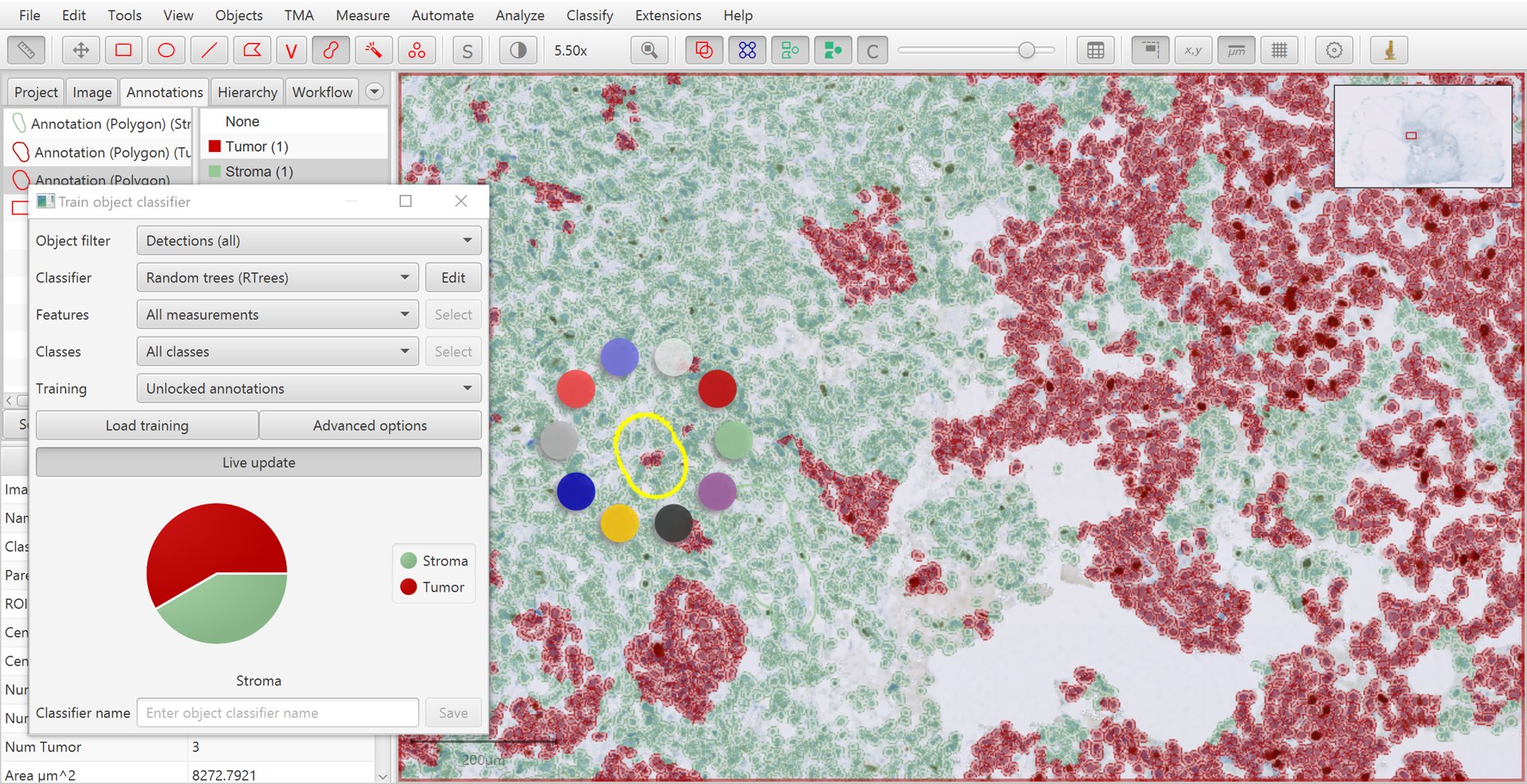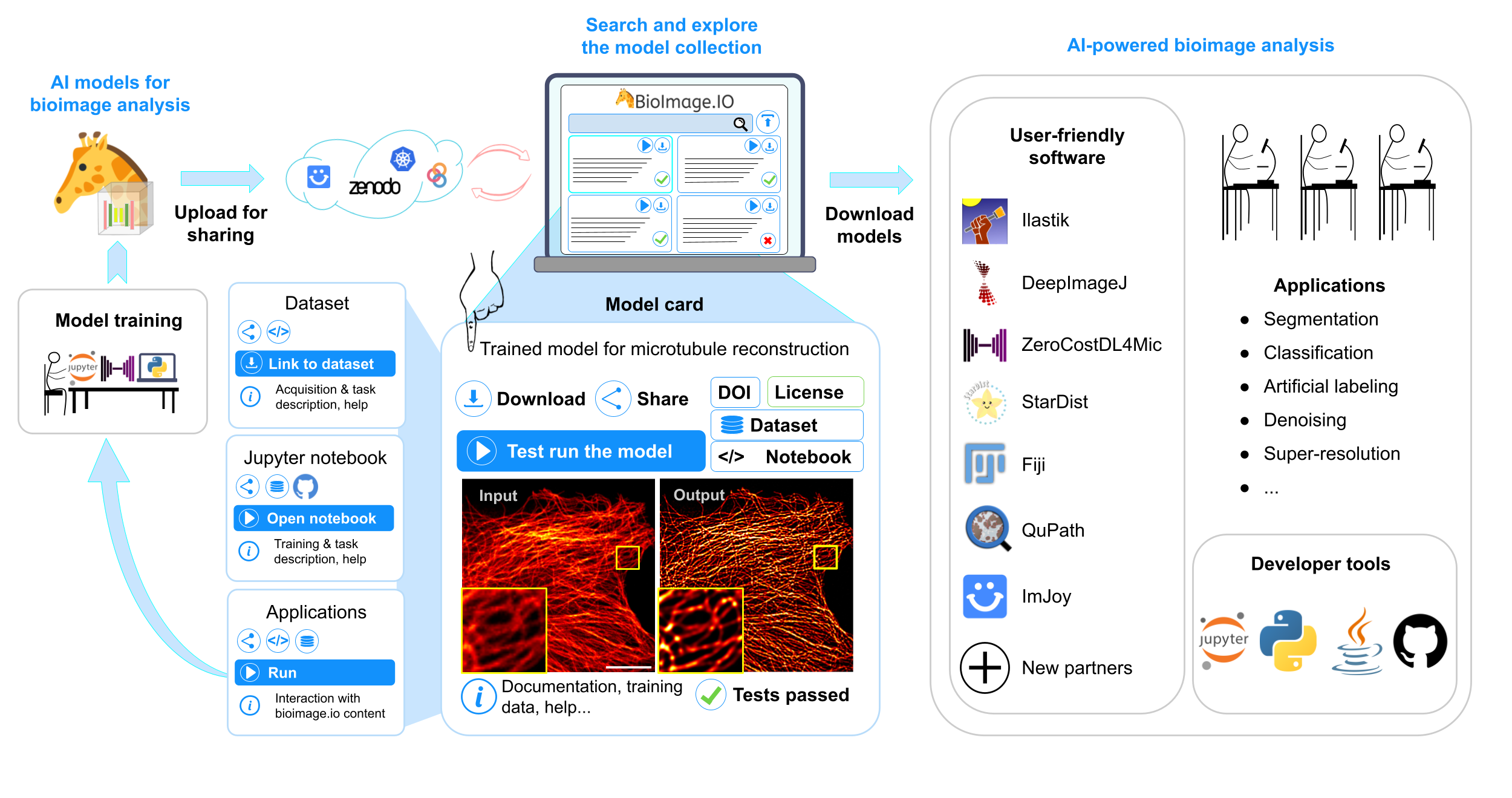Image Segmentation
Image segmentation is a crucial task in bioimage analysis, allowing researchers to identify and delineate specific structures of interest within an image.
- Semantic Segmentation
Tools in this category focus on segmenting images at the pixel level, where each pixel is assigned a label corresponding to a specific object or region of interest. This allows researchers to identify and delineate different structures in the image, such as cells, nuclei, or organelles. Examples of tools include Stardist and U-Net-based models.
- Instance Segmentation
Instance segmentation tools take semantic segmentation a step further by not only identifying object classes but also distinguishing individual instances of the same class. This is especially useful when dealing with densely packed cells or overlapping structures. Cellpose is an example of an instance segmentation tool.
All Segmentation Tools
StardistCellposeSegment AnythingArivis CloudPixel Classification
Image Denoising and Restoration
Image denoising and restoration are critical for improving the quality of microscopy images, reducing noise artifacts, and enhancing resolution. Deep learning for image denoising and restoration involves using artificial intelligence techniques, particularly deep neural networks, to enhance the quality of images by removing noise and restoring missing details. These neural networks are trained on large datasets of noisy and clean images, allowing them to learn to distinguish between noise and meaningful signals. Once trained, the models can effectively remove noise and improve image quality, making them valuable tools in various fields like medical imaging, microscopy, and computer vision. However, the effectiveness of these models heavily relies on the quality and diversity of the training data and the optimization of the network architecture to prevent overfitting.
- Image Denoising
Deep learning tools in this category aim to reduce noise and artifacts in microscopy images, enhancing their overall quality and improving downstream analyses. CARE (Content-aware image restoration) is a representative tool for image denoising.
- Image Deconvolution
Deconvolution-based tools use deep learning to recover high-resolution information from low-resolution images, providing clearer and more detailed results. These are often employed in super-resolution microscopy applications.
All Denoising Tools
Object Detection and Classification
Applications of deep learning for object detection and classification in bioimage analysis are widespread, such as in pathology for cancer cell detection, neuroscience for neuron identification, and cell biology for organelle localization. By automating these tasks, deep learning expedites analysis, reduces human bias, and enables large-scale investigations, opening new possibilities for scientific discovery and medical diagnosis.
QuPath - Cell classification Tutorial
All Classification Tools
QuPath ClassificationIlastikEvident TrueAI
The BioImage Model Zoo (BioImage Model Zoo) is an online repository and platform that provides access to a collection of pre-trained deep learning models specifically designed for bioimage analysis tasks. It serves as a centralized hub where researchers and developers can find and share state-of-the-art models tailored to various bioimaging applications.
BioImage Model Zoo: A Community-Driven Resource for Accessible Deep Learning in BioImage Analysis
Want to learn about Machine Learning and Deep Learning?
Check out these Webinars by the Neubias Academy@Home:
- Introduction to Machine Learning, Deep Learning and DeepImageJ by Ignacio Arganda-Carreras (Computer Science and Artificial Intelligence Department at University of the Basque Country (UPV/EHU))
- Introduction to Nuclei Segmentation with StarDist by Martin Weigert (EPFL Lausanne)
- A beginners guide to content-aware image restoration - an introduction to the methods and tools within CSBDeep by Florian Jug's Lab (MPI-CBG, Dresden)




Kommentar hinzufügen